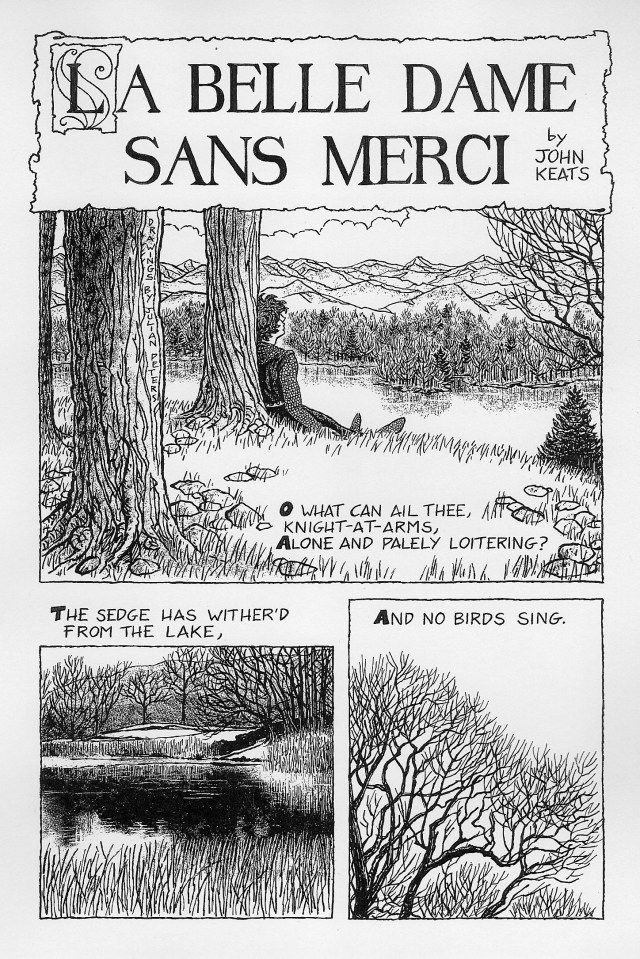La Belle Dame sans Mercy
Excerpt:
I met a lady in the meads,
Full beautiful—a faery’s child,
Her hair was long, her foot was light,
And her eyes were wild.
I made a garland for her head,
And bracelets too, and fragrant zone;
She looked at me as she did love,
And made sweet moan
This poem borrows its title from Alain Chartier's 15th-century courtly love ballad La Belle Dame sans Mercy, albeit it doesn't follow its plot. The poem's title, "The Beautiful Lady Without Mercy," is translated.
It primarily concentrates on the themes of love and death, like many of Keats' poetry. The poem describes a meeting between a knight and a stunning but enigmatic woman. She expresses her love for him but finally abandons him, leaving him in sorrow.
The first three stanzas of La Belle Dame sans Merci are a query to a knight, and the remaining nine are his response. Keats used the term "negative capability" in his poem to emphasize the value of intuition and doubt over reason and knowledge. It permits what is strange or uncertain to stay mysterious or doubtful.
In Keats' poetry, La Belle Dame Sans Merci is recognized as a prime example of "negative capacity." It is a widely popular poem that has been cited in numerous works of literature, music, art, and film.
Type: Ballad
Published: 1819











